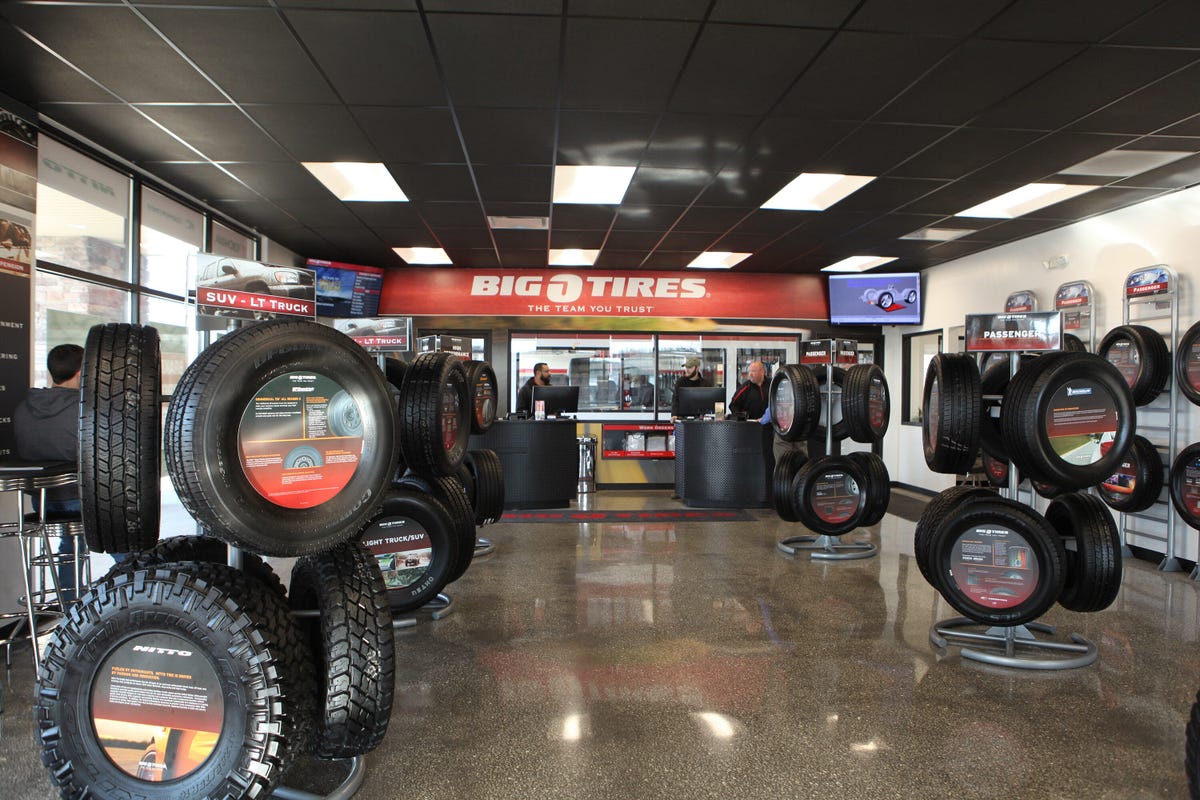Discover Top-Quality GMC Tires for Superior Performance and Security
Discover Top-Quality GMC Tires for Superior Performance and Security
Blog Article

The Relevance of Tire Service for Safe Driving
The condition of your tires can dramatically influence your vehicle's performance and total safety and security. From tire stress to tread depth, there are several crucial factors to take into consideration when it comes to tire service. Let's check out why tire service is a basic element of risk-free driving and how it can make a considerable difference in your general driving experience.
Tire Pressure Upkeep
When tires are underinflated, the get in touch with patch-- the area where the tire fulfills the road-- increases, leading to excessive warmth buildup and prospective tire blowouts. Conversely, overinflated tires reduce the call spot, resulting in irregular tire wear and decreased grip.
To maintain the correct tire pressure, refer to the lorry producer's referrals typically discovered in the proprietor's guidebook or on a sticker label situated inside the chauffeur's side door jamb - morris tires. By prioritizing tire stress maintenance, motorists can promote more secure driving problems and extend the life of their tires.
Footstep Deepness Assessment
Appropriate tire pressure not just enhances lorry efficiency but also affects step wear, making routine walk depth evaluation vital for secure driving. The tread deepness of a tire is crucial as it straight impacts traction, particularly in damp or snowy conditions. Not enough walk deepness can cause reduced grasp when driving, increasing the danger of accidents. To make certain optimum safety and security, vehicle drivers should regularly inspect their tire tread deepness utilizing a walk depth scale. The advised minimum walk depth is 2/32 of an inch; however, for boosted performance, specifically in unfavorable weather, a step deepness of 4/32 of an inch or more is a good idea. Unequal tread wear can suggest placement or suspension issues, additionally emphasizing the value of normal step deepness inspection. By keeping adequate walk depth, motorists can improve their automobile's handling, braking, and total safety on the road. Remember, secure driving starts with appropriate tire maintenance, including normal tread depth checks.
Routine Tire Rotations
Regular tire rotations are important for prolonging the life expectancy of your tires and making certain optimal performance of your car. By consistently rotating your tires, you assist disperse use more uniformly throughout all four tires. Front tires tend to put on out more rapidly than rear tires due to aspects like steering and stopping forces. Turning your tires at recommended intervals, normally every 5,000 to 7,500 miles, can aid avoid uneven wear patterns, which can bring about a smoother and much safer driving experience.

Value of Alignment Checks
Positioning checks play a vital function in ensuring that the even put on patterns achieved with normal tire rotations are maintained for ideal vehicle performance and safety and security. When your car's wheels are not correctly aligned, it can lead to unequal tire wear, influencing handling and gas performance.
Furthermore, correct positioning enhances road hold and security, particularly when driving in tough problems such as damp or icy roads. By scheduling regular positioning checks, you can address any type of issues quickly, guaranteeing that your vehicle runs at its ideal and promoting overall security on the road.
Indicators of Tire Put On
Maintaining attentive observation of your tires' problem is critical to ensuring risk-free and reliable driving practices. One of the crucial elements to keep an eye out for is tire wear, as it straight impacts the performance and look at this website security of your vehicle. There are a number of indications that show your tires might be wearing. Uneven tread wear across the tire surface can suggest placement problems or incorrect inflation. Bulges, cracks, or cuts on the sidewalls are warnings that the tire framework might be endangered. Tread depth is also critical, and if it drops listed below 2/32 of an inch, it's time to replace the tires for optimal traction. Furthermore, resonances, specifically at broadband, might suggest tire inequality or various other troubles. Regularly looking for these indicators of tire wear and addressing them quickly via professional assessment and maintenance will certainly not just extend the life of your tires but likewise enhance your safety and security when traveling.
Verdict

From tire stress to walk deepness, there are numerous key aspects to consider when it comes to tire solution. When tires are underinflated, the contact patch-- the location where the tire fulfills the roadway-- rises, leading to extreme warmth buildup and possible tire blowouts. By revolving your tires, you ensure that each tire uses evenly, preserving regular traction (morris tires). Routinely checking for these signs of tire wear and click resolving them promptly via specialist examination and upkeep will not just prolong the life of your tires yet also boost your safety on the road
Routine maintenance jobs such as monitoring tire pressure, inspecting step deepness, rotating tires, and inspecting placement are necessary to make certain optimum efficiency and long life of tires.
Report this page